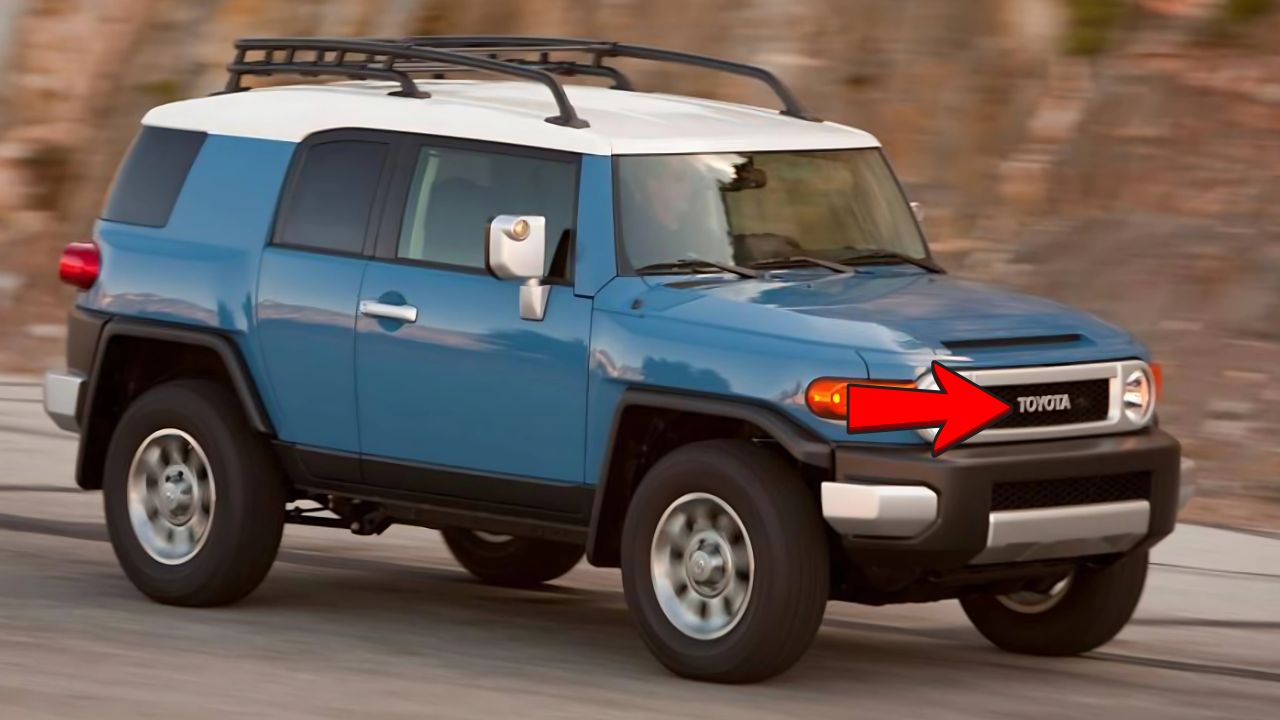The automotive world just got a massive wake-up call. Toyota’s planning something special that’ll make off-road lovers jump for joy.
A patent filing in the Philippines has leaked images of what appears to be the long-awaited FJ Cruiser successor. This isn’t just another rumor floating around car forums.
The Design That Screams Adventure
Looking at these patent images feels like stepping into a time machine. The new SUV combines the best bits of the original FJ Cruiser with modern touches that actually make sense.
Those thick C-pillars aren’t just for show – they give the vehicle that unmistakable tough-guy look. The stepped window line creates a profile that’s both distinctive and functional for serious off-roading.
Retro Meets Modern in Perfect Harmony
What really catches your eye are those black wheel arch extensions. They flow seamlessly into the bumpers, creating a unified design language that screams capability.
The front end borrows heavily from the HiLux Champ, which isn’t necessarily a bad thing. Both vehicles share Toyota’s philosophy of function over flash.
Size Matters: Compact Yet Capable
Early reports suggest this new FJ will measure around 4500mm in length. That’s compact enough for city driving but substantial enough for serious trail work.
The 2750mm wheelbase provides excellent stability without making the vehicle unwieldy. This sweet spot should appeal to both urban commuters and weekend warriors.
Platform Power: Built on Proven Foundations
Here’s where things get really interesting. Toyota’s using their IMV-0 body-on-frame architecture for this project.
This platform already underpins the HiLux Champ in Thailand, proving its worth in demanding conditions. The architecture prioritizes simplicity and durability over complexity.
Why Body-on-Frame Still Rules Off-Road
Unlike unibody construction, body-on-frame design offers superior strength for towing and rock crawling. The separate chassis can handle punishment that would destroy other architectures.
This choice signals Toyota’s serious commitment to genuine off-road capability. They’re not building another mall crawler here.
Comparing Platforms: IMV-0 vs TNGA-F
The current LandCruiser Prado uses Toyota’s TNGA-F platform. While more sophisticated, it’s also considerably more expensive to manufacture.

By choosing IMV-0, Toyota can offer genuine LandCruiser DNA at a fraction of the cost. Smart business move that benefits everyone.
Engine Options: Power Meets Efficiency
Don’t expect the 4.0-liter V6 from the original FJ Cruiser. Those days of thirsty engines are largely behind us.
Instead, expect the 2.7-liter four-cylinder petrol engine from the HiLux Champ. While smaller, modern engineering delivers impressive capability.
The Reality of Modern Powertrains
This 122kW/245Nm output might seem modest compared to the old V6. However, better gearing and reduced weight should maintain performance levels.
Fuel efficiency becomes increasingly important as gas prices climb worldwide. Toyota’s making the smart long-term play here.
Transmission Choices for Every Driver
Expect both five-speed manual and six-speed automatic options. The manual will appeal to purists who want maximum control.
The automatic provides convenience for daily driving without sacrificing off-road capability. Both transmissions have proven themselves in tough conditions.
Pricing Strategy: Affordable Adventure
This is where Toyota could really shake up the market. The HiLux Champ starts at just $21,750 in Thailand.
Even with additional features and different market dynamics, the FJ successor should significantly undercut the $72,500 Prado. We’re talking about potentially half the price for genuine Toyota quality.
Market Positioning Against Competitors
The Fortuner currently starts at $53,775 in Australia. The new FJ could slot in below that, creating a compelling value proposition.
This pricing strategy opens Toyota to entirely new customer segments. Young families and adventure seekers previously priced out of Toyota’s lineup suddenly have options.
Global Market Implications
What happens in one market rarely stays there. If the FJ successor proves successful, expect global rollout within 24 months.
Emerging markets particularly benefit from affordable, capable vehicles. Toyota’s building something that works everywhere, not just wealthy countries.
Competition and Market Reality
The off-road SUV segment has exploded in recent years. Everyone wants a piece of the adventure vehicle pie.
Toyota’s brand reputation for reliability gives them a massive advantage. When your life depends on your vehicle, Toyota’s track record matters.
Learning from Past Mistakes
The original FJ Cruiser had its flaws. Limited rear visibility and poor fuel economy hurt sales in later years.
This successor addresses those issues while maintaining the emotional connection that made the original special. That’s not easy to achieve.
Building on Success Stories
The 70-Series LandCruiser proves demand exists for basic, capable vehicles. People want substance over style when serious work needs doing.
This new FJ could capture that same spirit in a more accessible package. The formula works if executed properly.
Technology Integration: Keeping It Simple
Don’t expect cutting-edge infotainment systems or autonomous driving features. This vehicle prioritizes mechanical reliability over digital complexity.
Basic smartphone integration and essential safety features should cover most needs. Sometimes less really is more.
Durability Over Gadgets
In remote locations, mechanical simplicity becomes a survival feature. Fewer electronic systems mean fewer potential failure points.
Toyota understands their target market values dependability above flashy features. They’re building a tool, not a tech showcase.
Production Timeline and Availability
Patent filings typically precede production by 18-24 months. That puts potential launch sometime in 2026.
Global availability depends on market reception and regulatory approval. Some regions might see the vehicle sooner than others.
Manufacturing Considerations
Toyota will likely produce this vehicle in multiple locations to serve global demand. Thailand seems the obvious choice for initial production.
Local assembly in key markets could help with pricing and availability. Toyota’s global manufacturing network enables flexible strategies.

What This Means for Off-Road Enthusiasts
Finally, an affordable entry point into genuine Toyota capability. The brand’s off-road reputation speaks for itself.
This vehicle could introduce an entire generation to serious adventure travel. That’s good for the industry and the community.
Building the Next Generation of Adventurers
Young people deserve access to capable, reliable vehicles. High prices have locked out too many potential enthusiasts.
An affordable FJ successor changes that dynamic completely. More people exploring means stronger communities and better trails.
Frequently Asked Questions
Q: When will the Toyota FJ Cruiser successor be available for purchase? Based on patent filing timelines, expect availability around 2026, though this may vary by market.
Q: How much will the new FJ Cruiser successor cost? While not officially announced, expect pricing significantly below the current Prado, possibly around $40,000-50,000.
Q: Will the FJ successor have the same off-road capability as the original? Yes, the body-on-frame construction and Toyota’s engineering should deliver comparable off-road performance with better efficiency.
